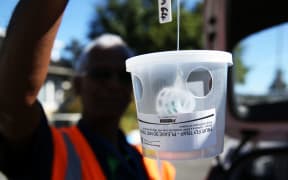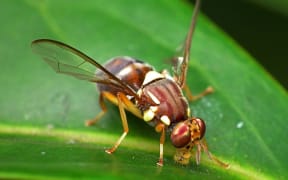Traps have been set, thousands of pamphlets delivered and hundreds of bins are being rolled out as part of a biosecurity crackdown after the discovery of a Queensland fruit fly in Auckland.
A zone surrounding the property in Grey Lynn where the male fly was found on Monday is in lockdown for at least two weeks while officials see if more flies have established themselves.
Ministry for Primary Industries (MPI) staff are today setting more traps in the control zone which includes parts of Grey Lynn, Western Springs, Mt Albert, Ponsonby and Kingsland. Taking fruit and some vegetables out of the zone is banned.
Growers say a fruit fly outbreak could destroy their businesses immediately and force them to lay off thousands of workers around the country. It would also stop many of the country's 5500 commercial growers from moving produce inside and outside New Zealand.
Secretary of the Auckland Fruit Growers Association, Monty Neal, said he was just days away from harvesting apples and restrictions would hamper deliveries.
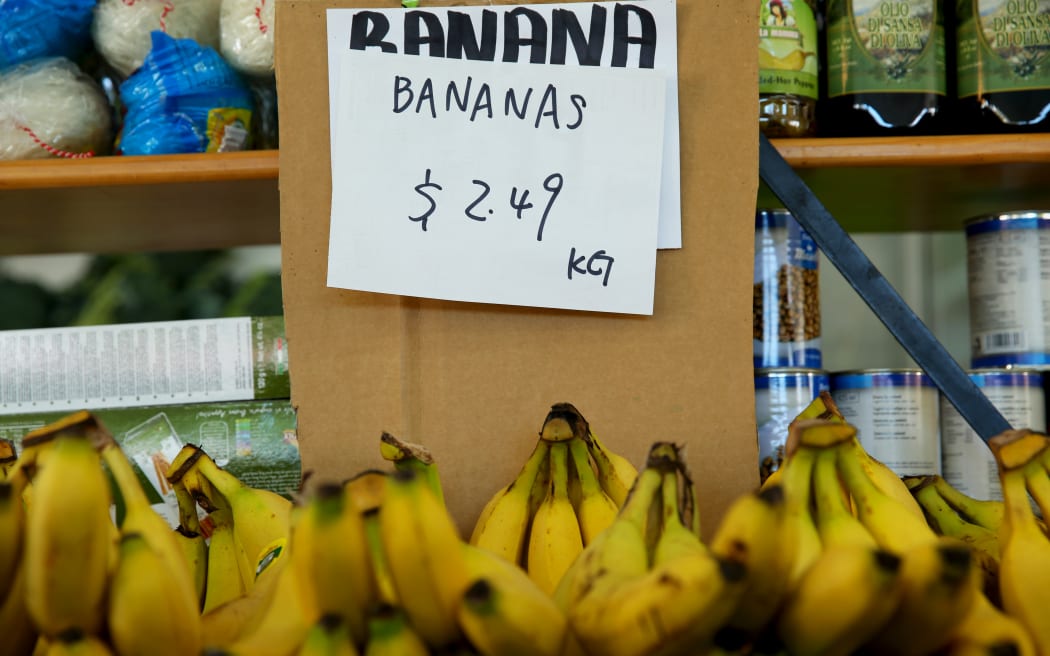
Restrictions are likely to affect deliveries of fruit. Photo: RNZ / Alexander Robertson
HortNZ calls for tougher screening
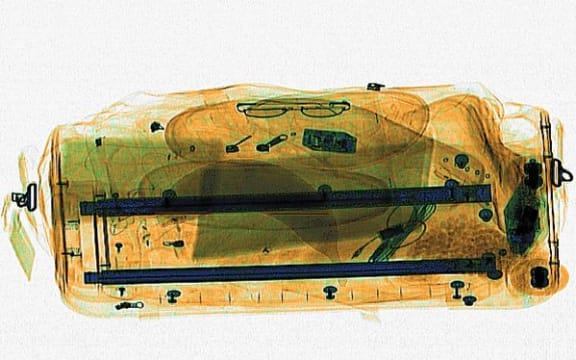
Banana in a bag can be seen in x-ray image. Photo: SUPPLIED
New Zealand's horticulture industry body HortNZ is blaming the incursion on Australia's inability to control the pest and wants a return to x-ray screening of all baggage at international airports for fruit.
Chief executive Peter Silcock said tighter border controls were needed, given this was the fourth time in three years one of the pests had been found in traps.
Mr Silcock said the move away from x-raying all luggage at airports should be reversed.
"We know that the x-ray is very good at picking up pieces of fruit and that's how this would come in, in a passenger's bag with a piece of fruit or two."
Mr Silcock said relying on pheromone traps to lure male fruit fly as a last line of defence is not good enough.
He said the distribution of the fruit fly in Australia was expanding rapidly and the country appeared to be unable to control the pest.
"It's effectively out of control there, I think. They are having incursions down into South Australia and Adelaide, so that's a real concern for us."
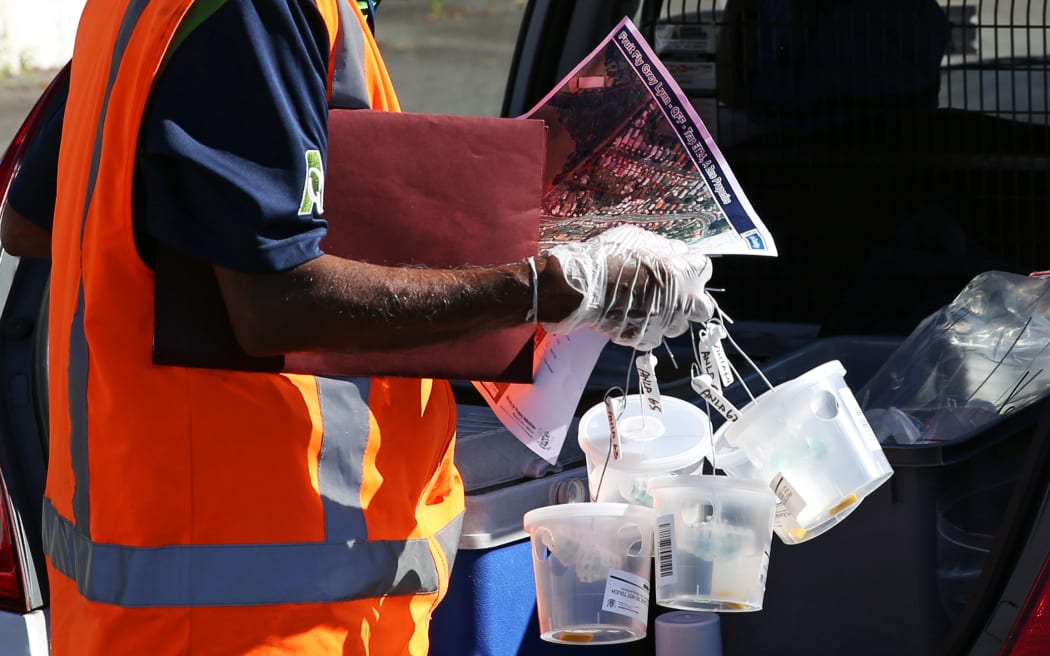
Ministry for Primary Industries contractors were setting fruit fly traps in Grey Lynn, Auckland, on Wednesday. Photo: RNZ / Alexander Robertson
Andrew Coleman of MPI told Morning Report that since the last fruit fly alert, in Whangarei last year, more people have had their bags x-rayed.
He said the ministry always responded to threats by looking at its airport controls and if tighter measures were necessary, they would be considered.
The insect would have come in as an egg or larva on a piece of fruit but airlines were only one way for the fruit to enter the country.
Primary Industries Minister Nathan Guy said x-raying at the border was not the answer to minimise biosecurity threats.
He said there were measures in place to deal with incoming passengers.
"We don't x-ray bags for New Zealand and Australian citizens. But bear in mind they have to fill in a declaration, they are screened for an MPI official, more than likely they have been sniffed by one of our sniffer dogs and as I said, we've increased those numbers from 20 to 40.
"That's one of the areas that we will focus on now. It's too early to rule anything in or out," Mr Guy said.
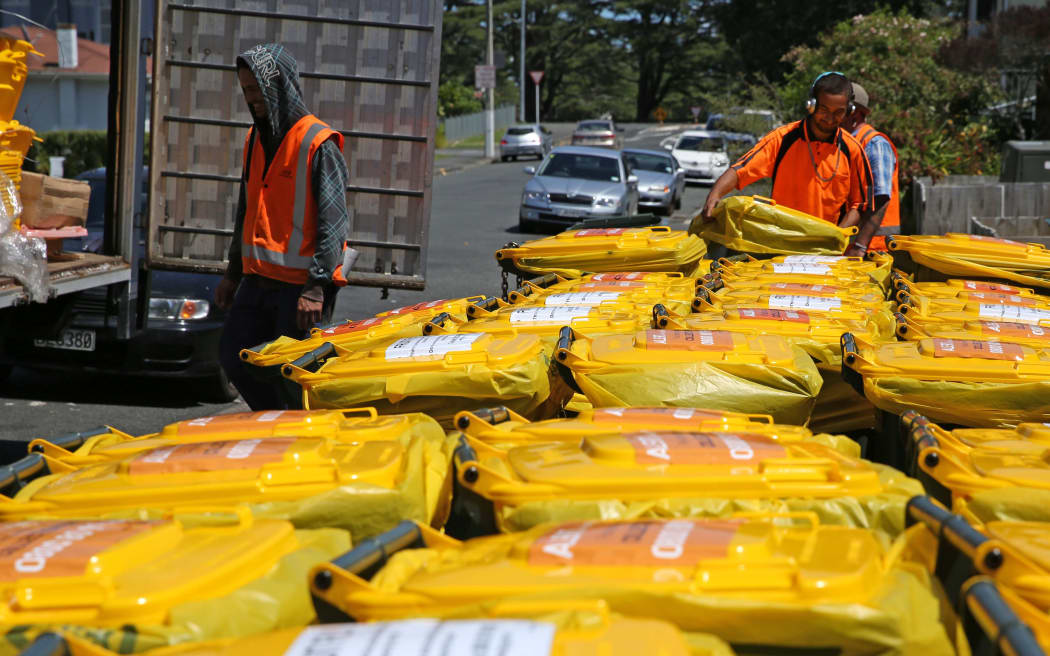
Fruit bins being put out at every house in a 200m radius from where the fruit fly was found in Grey Lynn. Photo: RNZ / Alexander Robertson
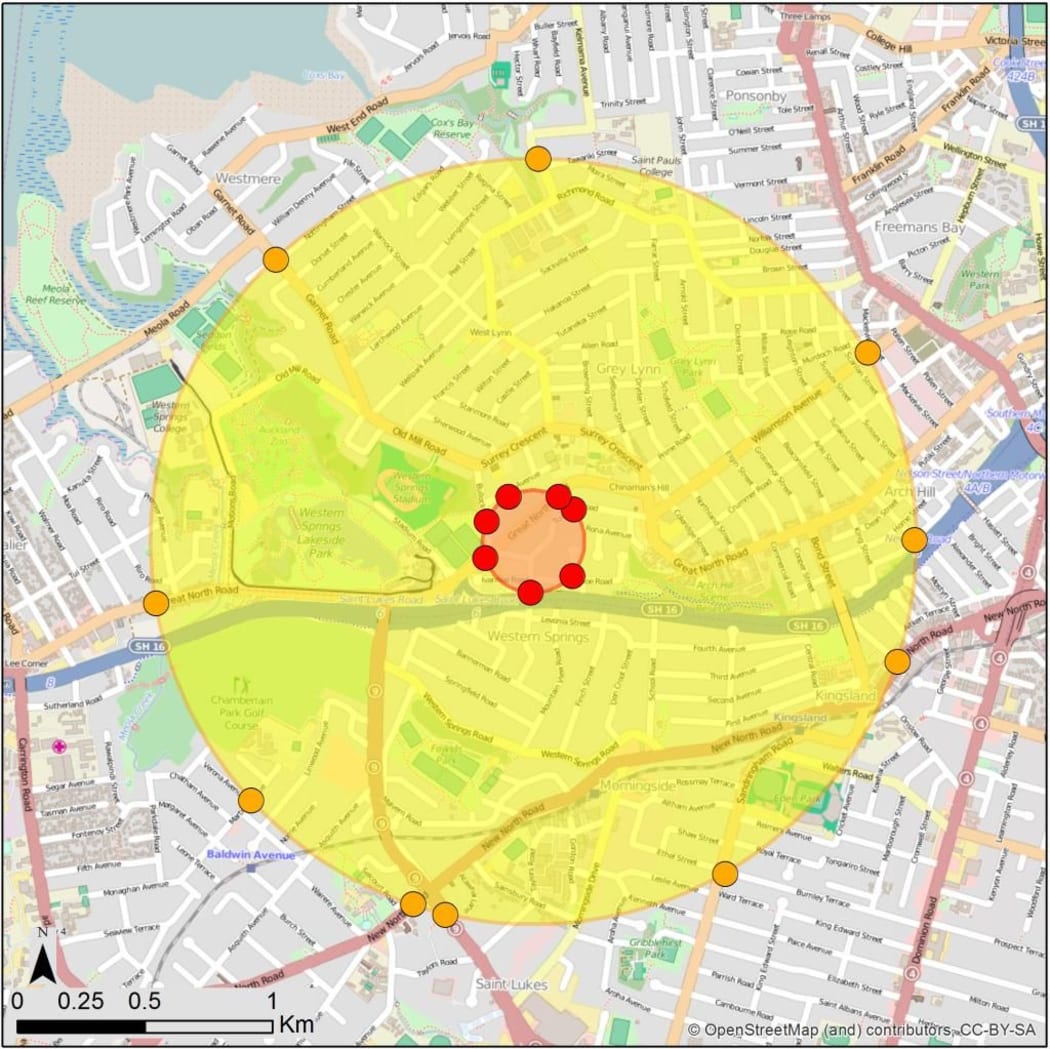
Controlled area in Auckland after fruit fly discovery. Photo: SUPPLIED / MPI
Meanwhile, the latest find will affect one of the Cricket World Cup matches. Auckland's Eden Park falls inside the 1.5 kilometre control area, so restrictions will be in place for the game between New Zealand and Australia later this month.
The general manager of operations for the New Zealand Cricket World Cup, Anthony Crummy, said fans would be allowed to bring fresh fruit or vegetables into the venue, but not take them out.
Fruit flies and their potential to do harm.
- The fly's official name is Bactrocera tryoni And, unsurprisingly, given its common title (the Queensland fruit fly) it loves temperate to tropical climes.
- It also enjoys munching on pome fruit - apples, pears stone fruit, citrus and vegetables.
- An outbreak of the the fly in NSW in 1940-1941 ruined 5 to 25 percent of the citrus harvest. It is considered Australia's worst inspect pest of fruit and vegetable crops.
- The fruit fly likes to travel and according to New Zealand officials is most likely to arrive with plane passengers bringing infested fruit in luggage.
- The adult flies grow 6mm to 8mm and can live for many weeks, some times months. A female can lay several hundred eggs in a lifetime and has one or two partners. Males mate many times. Dusk is the preferred time for relations, apparently.
- They don't like to do a great deal in the heat of the day, typically resting up in shady trees.
- The larvae tend to eat their way to the heart of fruit, with the outside often appearing intact.
- As many as nearly 70 adults have been reared from one apple in experiments.
